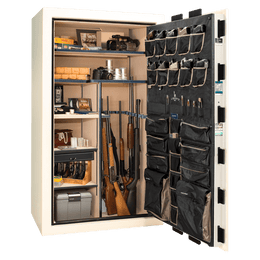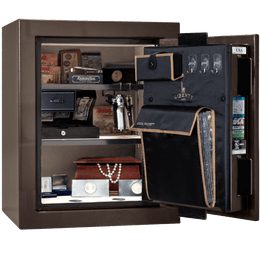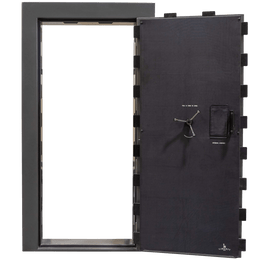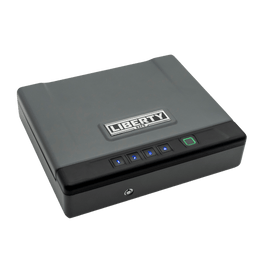Protecting Your Valuables from a Silent Threat
You've invested in one of America's #1 home and gun safes to protect your firearms, important documents, and irreplaceable heirlooms from theft and fire. But there's another, more subtle threat that can cause irreparable damage over time: humidity. Trapped moisture inside a sealed safe creates a perfect environment for rust, corrosion, mildew, and mold. This can silently degrade metal, warp wood, and destroy paper. Effectively managing the climate inside your safe is not a luxury—it's a necessity for true protection.
The two most common solutions for moisture control in a safe are electric dehumidifiers and desiccant absorbers like silica gel. While both aim to reduce humidity, they operate differently and offer distinct advantages. Understanding these differences is key to choosing the right method for your specific needs, collection, and environment.
The Electric Solution: Safe Dehumidifier Rods
An electric safe dehumidifier, often called a "golden rod," is a low-wattage heating element that you place inside your safe. It works by slightly raising the air temperature within the safe. This warmer air can hold more moisture, which prevents condensation from forming on your valuables. The constant, gentle air circulation created by the rising warm air pushes the moist air out through the safe's openings, maintaining a stable, dry environment.
Pros:
- Consistent Performance: Provides continuous, 24/7 protection without any need for maintenance or recharging.
- Set-and-Forget: Once installed, it works autonomously, offering true peace of mind.
- Effective Circulation: Actively circulates air to prevent stagnant, damp pockets from forming.
- Long Lifespan: A high-quality rod can last for many years without needing replacement.
Cons:
- Requires Electricity: The safe must be near a power outlet, and an electrical cord must be run inside.
- Higher Initial Cost: The upfront investment is typically greater than that for silica gel packs.
- Minor Energy Use: While minimal, it does consume a small amount of electricity continuously.
The Passive Absorber: Silica Gel Packs
Silica gel is a desiccant, a substance that absorbs and holds water vapor. It works passively, pulling moisture directly from the air and trapping it within its porous beads. You've likely seen small packets of it in new shoes or electronics. For safes, larger canisters or bags are used. Many feature indicator beads that change color when the gel is saturated and needs to be "recharged." Recharging is typically done by baking the canister in an oven to release the trapped moisture. An organized storage solution like our Ammo Cabinet can also benefit from moisture control.
Pros:
- No Electricity Needed: Can be used anywhere, regardless of proximity to a power source.
- Lower Initial Cost: Generally more affordable to purchase initially.
- Portable: Easily moved between different safes, cabinets, or storage containers like an Ammo Canister.
- Great for Small Spaces: Ideal for smaller handgun vaults or closet safes where a rod might be impractical.
Cons:
- Requires Maintenance: Must be regularly checked and recharged (or replaced), which can be forgotten.
- Finite Capacity: Once saturated, it stops absorbing moisture until it is recharged.
- Less Effective in High Humidity: In persistently damp environments, it may require frequent recharging to be effective.
At a Glance: Dehumidifier Rod vs. Silica Gel
| Feature | Electric Dehumidifier Rod | Silica Gel Desiccant |
|---|---|---|
| Power Source | Requires electrical outlet | None (Passive) |
| Maintenance | None (Set-and-forget) | Periodic recharging required |
| Effectiveness | High and consistent | Variable; dependent on saturation |
| Upfront Cost | Moderate | Low |
| Best For | Medium to large safes, high-humidity climates, low-maintenance users. | Small safes, areas without power, budget-conscious buyers. |
Did You Know?
- ✓ A relative humidity level between 30% and 50% is generally considered ideal for the inside of a safe to prevent rust and mildew without drying out wood stocks on firearms.
- ✓ The term "golden rod" is a popular brand name that has become synonymous with rod-style safe dehumidifiers.
- ✓ Silica gel is non-toxic and chemically inert, making it a safe desiccant to use around your most sensitive valuables.
Choosing the Right Moisture Control for Your US Climate
Your geographical location in the United States plays a significant role in determining the best moisture control strategy. The level of ambient humidity varies drastically from one region to another.
- High-Humidity Regions (e.g., Southeast, Gulf Coast): If you live in an area known for its high humidity, like Florida or Louisiana, an electric dehumidifier rod is almost always the superior choice. It provides the constant, powerful protection needed to combat persistent moisture. Silica gel in these climates would require very frequent recharging, making it impractical as a primary solution. Proper fire protection seals also help in keeping ambient air out.
- Moderate or Seasonal Humidity Regions (e.g., Northeast, Midwest): In these areas, either option can be effective. Your choice may come down to convenience and safe size. For larger safes like the National Classic 60, a dehumidifier rod is recommended. For smaller safes or those who prefer a non-electric option, a large, rechargeable silica gel canister can work well, especially if checked regularly during humid summer months.
- Arid and Dry Regions (e.g., Southwest): In climates like those in Arizona or Nevada, ambient humidity is naturally low. While some form of moisture control is still wise (as moisture can get trapped from temperature swings), a quality silica gel pack is often sufficient. It can handle the minimal moisture without the need for a constant electrical connection.
Regardless of your choice, monitoring the humidity level with a digital hygrometer is the best way to ensure your valuables are truly protected. Further tips can be found in our Gun Safe Use and Care guide.
Secure Your Peace of Mind
Your valuables deserve complete protection from every threat, including moisture. If you have questions about the best climate control solution for your safe, our experts are here to help.
Contact Us TodayFrequently Asked Questions (FAQ)
How often do I need to recharge a silica gel canister?
This depends heavily on your local climate and how often the safe is opened. In humid areas, you might need to recharge it every 2-4 weeks. In dry climates, it could last several months. Most canisters have color-indicating beads that tell you when it's time.
Is an electric dehumidifier rod expensive to run?
No, they are very energy-efficient. Most rods use only 7-12 watts of power, which typically costs just a few dollars per year in electricity—a small price for constant protection.
Can I use both a dehumidifier and silica gel at the same time?
Yes, you can. For those in extremely humid environments or who want maximum protection, using both is a great strategy. The rod will do the heavy lifting, while the silica gel can help absorb any excess moisture when the safe door is opened and new, damp air is introduced.
Where is the best place to install a dehumidifier rod in my safe?
Dehumidifier rods should be placed horizontally at the bottom of the safe, near the floor. Since heat rises, this allows the warm, dry air to circulate upwards naturally, covering the entire interior of the safe for the most effective moisture control.
Glossary of Terms
Desiccant: A substance that absorbs moisture from the air, creating or maintaining a state of dryness. Silica gel is a common example.
Hygrometer: An instrument used to measure the amount of water vapor in the air, or the relative humidity.
Relative Humidity (RH): The amount of moisture in the air compared to what the air can "hold" at that temperature. It is expressed as a percentage.
Ambient Temperature: The temperature of the air in a given environment. Significant fluctuations can cause condensation inside a safe if not properly managed.







